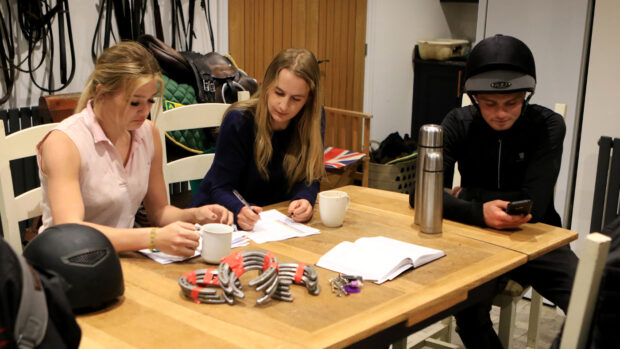Pain is not always considered first when a horse presents changes in behaviour or performance, as a new study shines the light on managing pain in horses.
Researchers from the University of Liverpool have investigated owners’ and vets’ decision-making around chronic pain management. The study, which was presented at the British Equine Veterinary Association Congress (12–14 September), involved interviews with vets and owners, and observations of veterinary consultations.
Lead author Becky Smith told H&H the aim of the study was to understand what led owners to seek veterinary advice for their horses and times when pain may be a consideration.
“We wanted to understand the decision-making that led to veterinary involvement, and how the interactions between vets and owners during consultations not only shaped the vet’s approach, but impacted on the decisions made,” Dr Smith said.
“The really strong theme was that owners had developed strong knowledge of their horses over time, and through that would make interpretations of their behaviour. Commonly during the study, pain was not generally the primary concern that owners would report to the vet, it might be changes in behaviour or performance.”
Among the findings, the results showed that “owners generally viewed pain as indicative of something requiring a vet visit” but that other management strategies or forms of advice “often preceded” veterinary involvement. Some owners opted to try avenues, such as box rest, having a saddle checked or asking others on the yard before seeking veterinary advice.
“We know that with a pain-related issue, seeking veterinary advice as early as possible is really important, and from previous research we know that every interaction between the owner and vet shapes when a vet is brought in in the future, so I think building those vet-owner relationships so the vet is an earlier source of advice is going to be beneficial,” said Dr Smith.
The study found that vets’ approaches to management and the discussions with owners were shaped by factors including horse age, lifestyle, and perceptions of owners’ goals. The uptake of veterinary recommendations was “influenced by the practicalities” for owner and horses.
“It’s important for vets to support owners and provide opportunities for them to express their concerns, or discuss practical or ethical considerations about management approaches, said Dr Smith, adding that owners’ approaches to pain management were “very individual”.
“When it came to things like the use of alternative therapies like magnetic bands for example, it was perceived that if they were something they had used on themselves or family members, they would be something they would be more open to using on their animals,” she said.
The Horse Trust, which funded the research, is home to many retired horses – some of which receive chronic pain management. The Horse Trust vet Nicky Housby-Skeggs told H&H that as horses are prey animals, they do not want to show they are in pain, so sometimes it can be difficult to recognise.
“I think that’s the first challenge,” she said. “There might be times when people notice a horse is lame, but they won’t associate that with the fact that the horse is in pain – or they might be dropping food, but they might not associate that with dental pain for example.
“People often recognise signs, but don’t necessarily link it to pain. We see it a lot with behaviour cases too, where perhaps people might say the horse is being ‘naughty’, but actually the horse is in pain.
“Once we recognise something is related to pain, we can then think about how to manage that and make that horse’s quality of life better. That doesn’t necessarily mean a horse is going to be filled with drugs, but it might mean incorporating medication, additional supplements, physiotherapy, or a change in shoeing. We try to think about multimodal pain relief, where a combination of things together can all make a difference.”
- To stay up to date with all the breaking news throughout Horse of the Year Show, London International and more, subscribe to the Horse & Hound website
You may also be interested in:

Concern as study found dressage horses behind the vertical earned higher scores

‘Hearts and minds’: how changing owner behaviour can help our horses

Subscribe to Horse & Hound magazine today – and enjoy unlimited website access all year round





